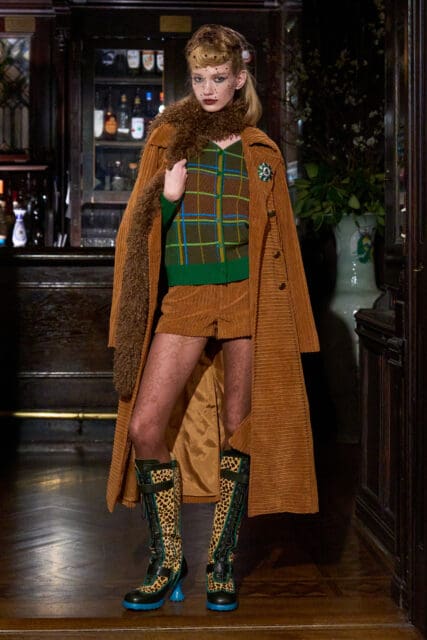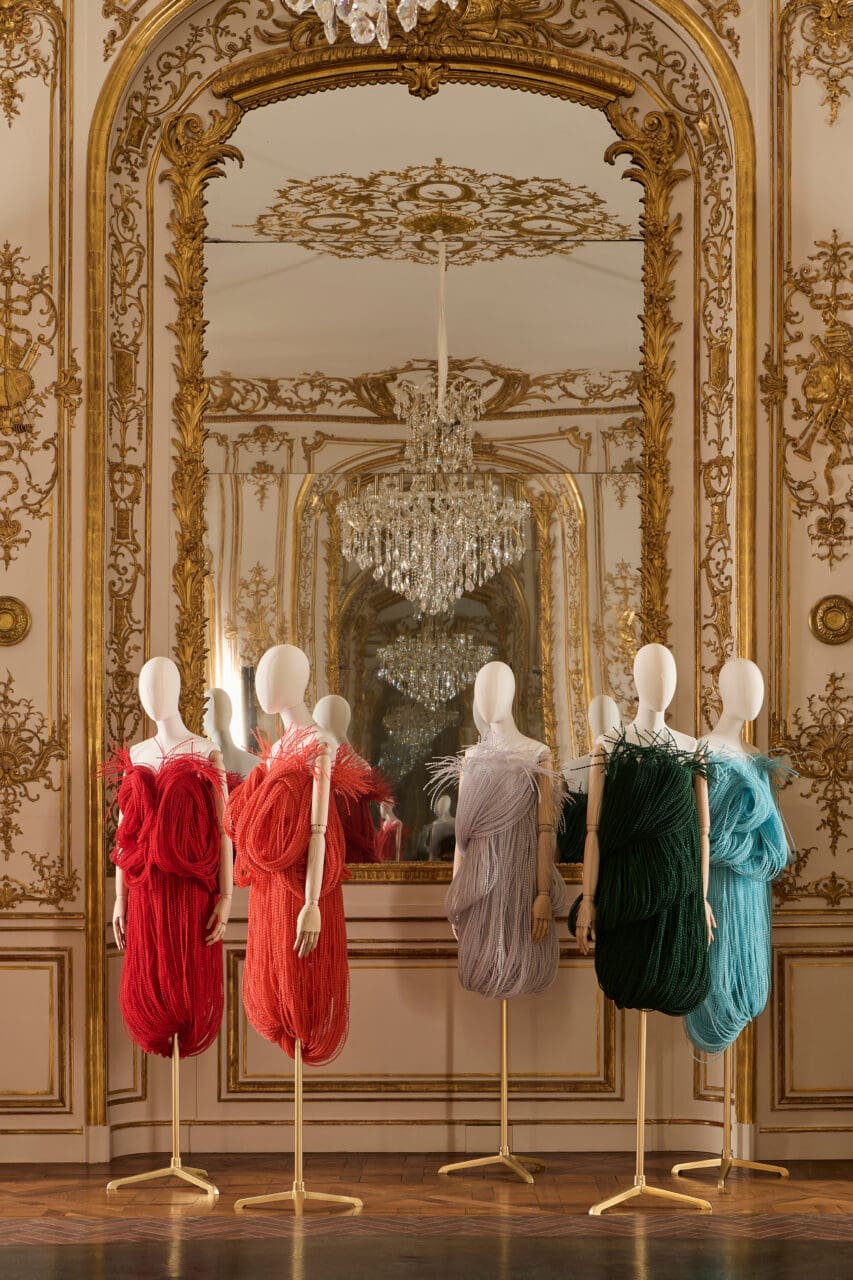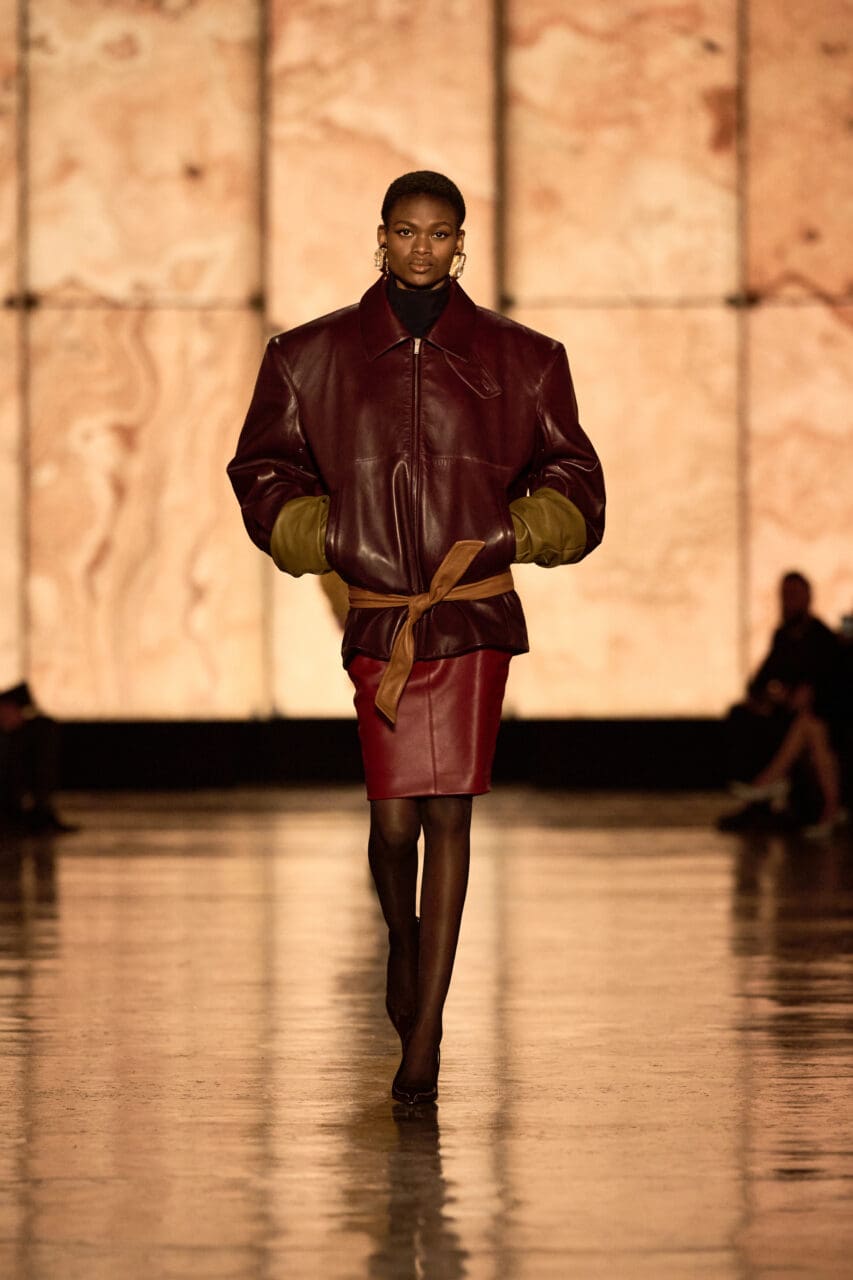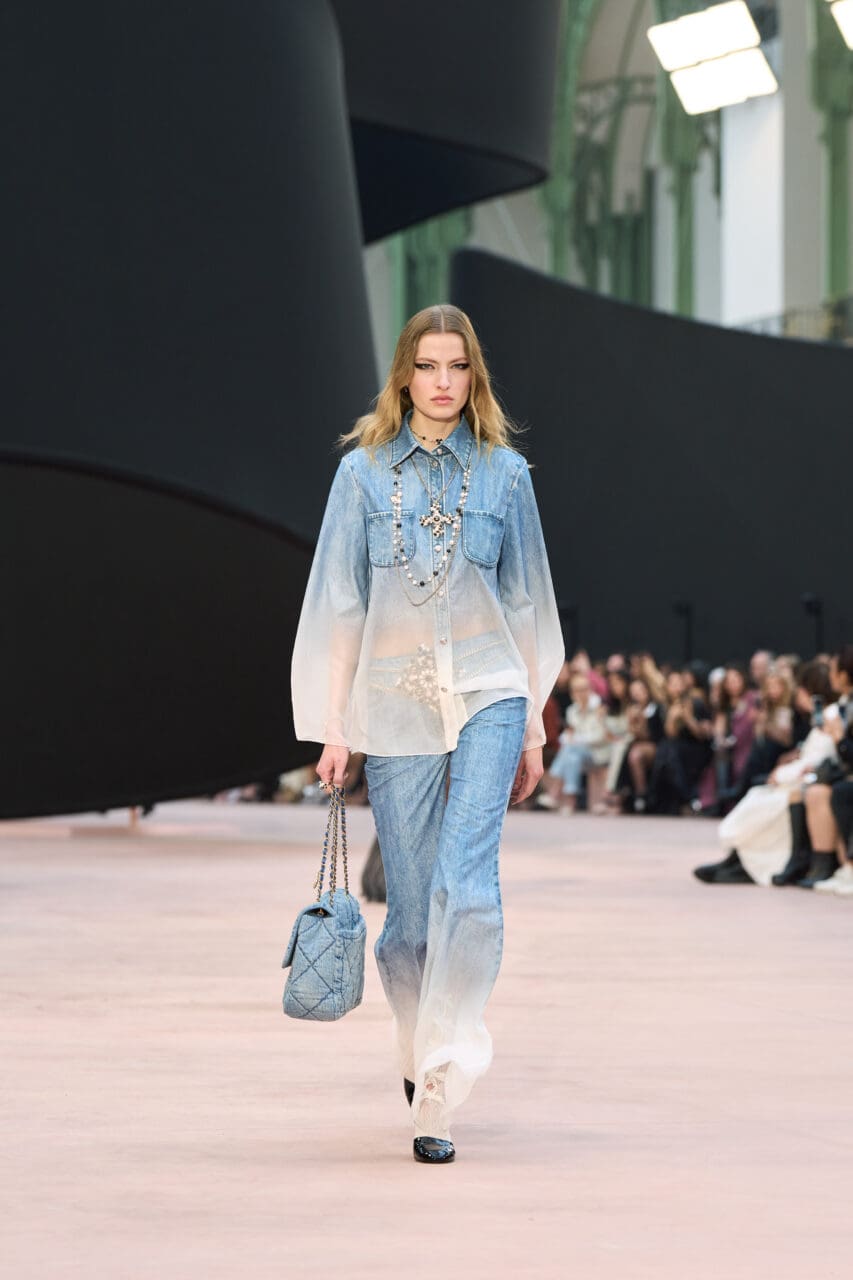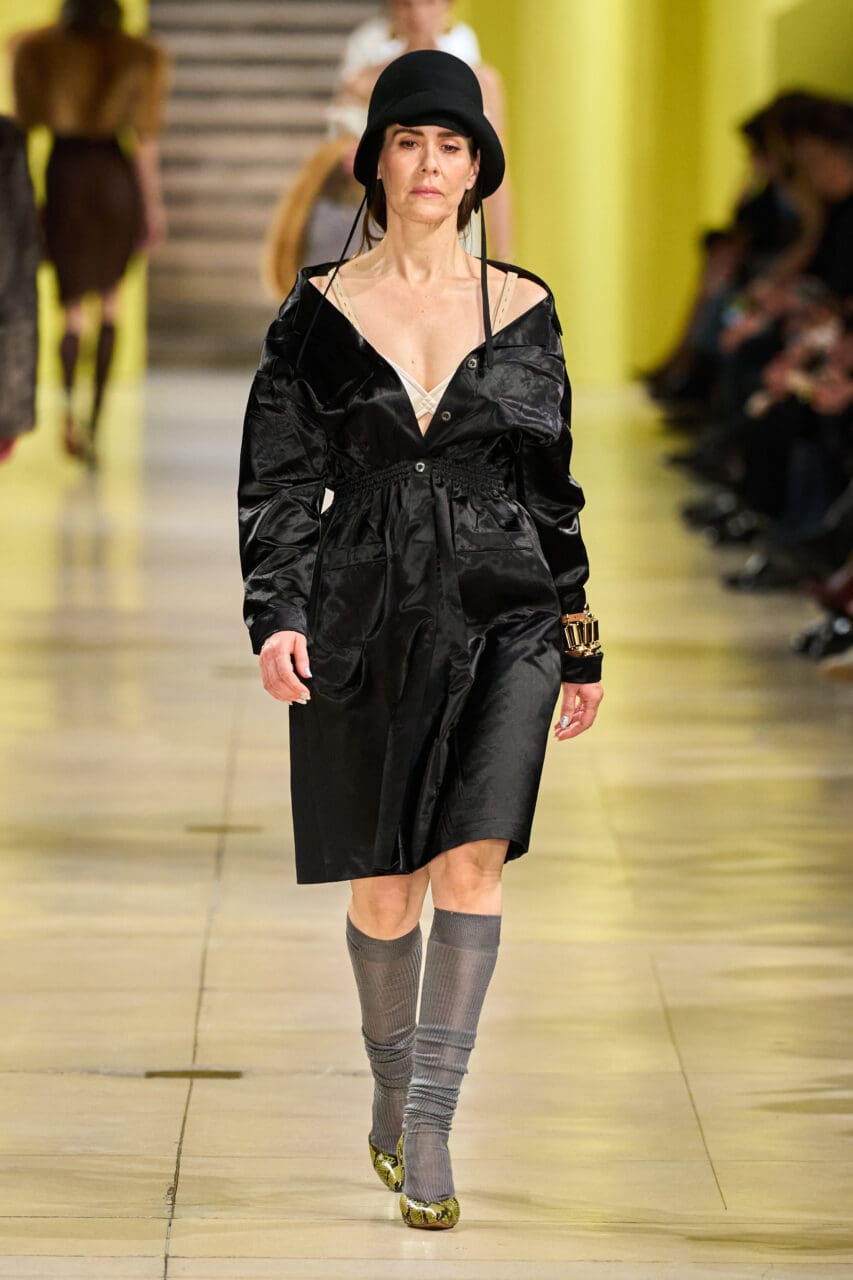Back in 1996, British designer Stuart Vevers came to New York for the first time and was blown away by the East Village skate and street culture that was so infamously chronicled in Larry Clark’s Kids, a movie which came out a year earlier than his visit and gifted us the likes of Harmony Korine and Chloë Sevigny. Decades on, and here’s Vevers at Coach, that most democratic of American brands, and it’s youth that he is leaning into to lead him and Coach forward. His tenure there has been marked by his considerable talent at making his collections feel effortlessly cool and real while offering a ton of great things to buy and wear. (It was easy to write that: To achieve it, perhaps not so much.)
Fashion-wise for Coach next fall, that means everything—from gorgeous vintage-y flapper dresses, to shrunken distressed leather or shearling aviator jackets, to long coats with skinny sleeves and narrow shoulders, which land somewhere between The Matrix and 1990s Antwerp—is worn with and over slacker-ish, skater-ish pants. Great big, super duper wide legged trousers, whose waists are accentuated by very long belts, and with hems that puddle onto the ground, perhaps revealing a glimpse of a diamanté brooch-bedecked sneaker, or vast furry slippers shaped like bunny rabbits.
At that preview, Vevers had remarked that as he was working on fall, “the idea of a clear message kept coming up, whether it was a really focused color palette, or a very clear silhouette. There’s definitely a kind of ’90s nonchalance going on, but it’s as important to be as clear about what you’re doing as who you are: our values of inclusivity and sustainability.” When it comes to the latter, that meant all the denim in the show was upcycled; the jeans with the leather patches were particularly good. And when it came to the look, Vevers certainly caught the current generational interest in the ’90s (and the early noughts). It’s a time that is likely on the minds of the people he had on the Coach runway; the casting of the show was terrific.
It’s an era that’s perceived as about absolute freedom and the optimism which that could bring. Given where we are now, even those of us who lived through it the first time around can find ourselves longing for it. And tonally, as well as stylistically, that’s why this collection worked: it might have invoked a different time, but with its somber and sober dark hues of black, navy and brown, and its sense of broken in and broken down elegance, it spoke clearly and strongly of today.
Editor
Mark HolgateCredit
Lead image: Isidore Montag / Gorunway.com
